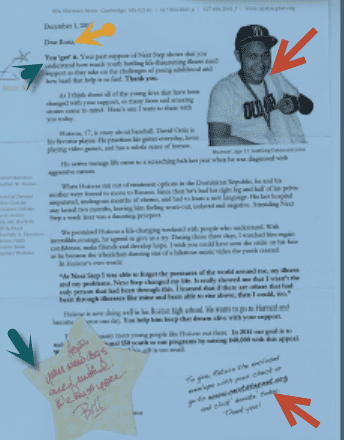Let’s try an experiment. You’ll need your latest fundraising letter, a blue pen, and a yellow highlighter. Put them all on your desk. Ready?
Pick up the pen and circle every mention of your organization. It could be the agency’s name. It could be the word “we,” used to refer to your organization. How many blue circles do you see? A lot, I’ll bet.
Now, pick up the highlighter and underline every mention of your donor. Yes, you can count the salutation if you called them by name. You can also highlight the word “you”–if that means the donor who’s reading the letter.
Is there more yellow on the page than blue? If not, you’re losing donors with every letter you send.
To Renew Their Support, Focus on Donors
A lot of us in the nonprofit world are under a misconception. We think that the reason donors give to us is because we do good work.
No, that’s the reason we’re proud of our organizations. It’s not the reason people give!
If doing good work were enough, you wouldn’t have to worry about getting donors to renew. They’d get to know, like, and trust your organization, and then they’d keep on giving into the indefinite future. But about 70% of the people who gave to you for the first time in 2015 didn’t renew their gift in 2016.
Don’t focus on what you do. Focus on how the donor feels.
Make the Donor the Hero of the Story
Seth Godin writes:
Why on earth would a rational person give money to charity–particularly a charity that supports strangers? What do they get?
A story.
It might be the story of doing the right thing, or fitting in, or pleasing a friend or honoring a memory, but the story has value. It might be the story that you, and you alone are able to make this difference, or perhaps it’s the story of using leverage to change the world. For many, it’s the story of what it means to be part of a community.
For your donor to renew, she or he has to feel like the hero of the story. You are the one who is going to make donors feel like heroes. And the fundraising appeal letter is just one of the many times during the year you have an opportunity to do that–but it’s a crucial time.
 Use your fundraising powers for good.
Use your fundraising powers for good.
Write fundraising appeals that tell the donor, “Because of you, this happened. You are my hero. And you are needed, now.”



